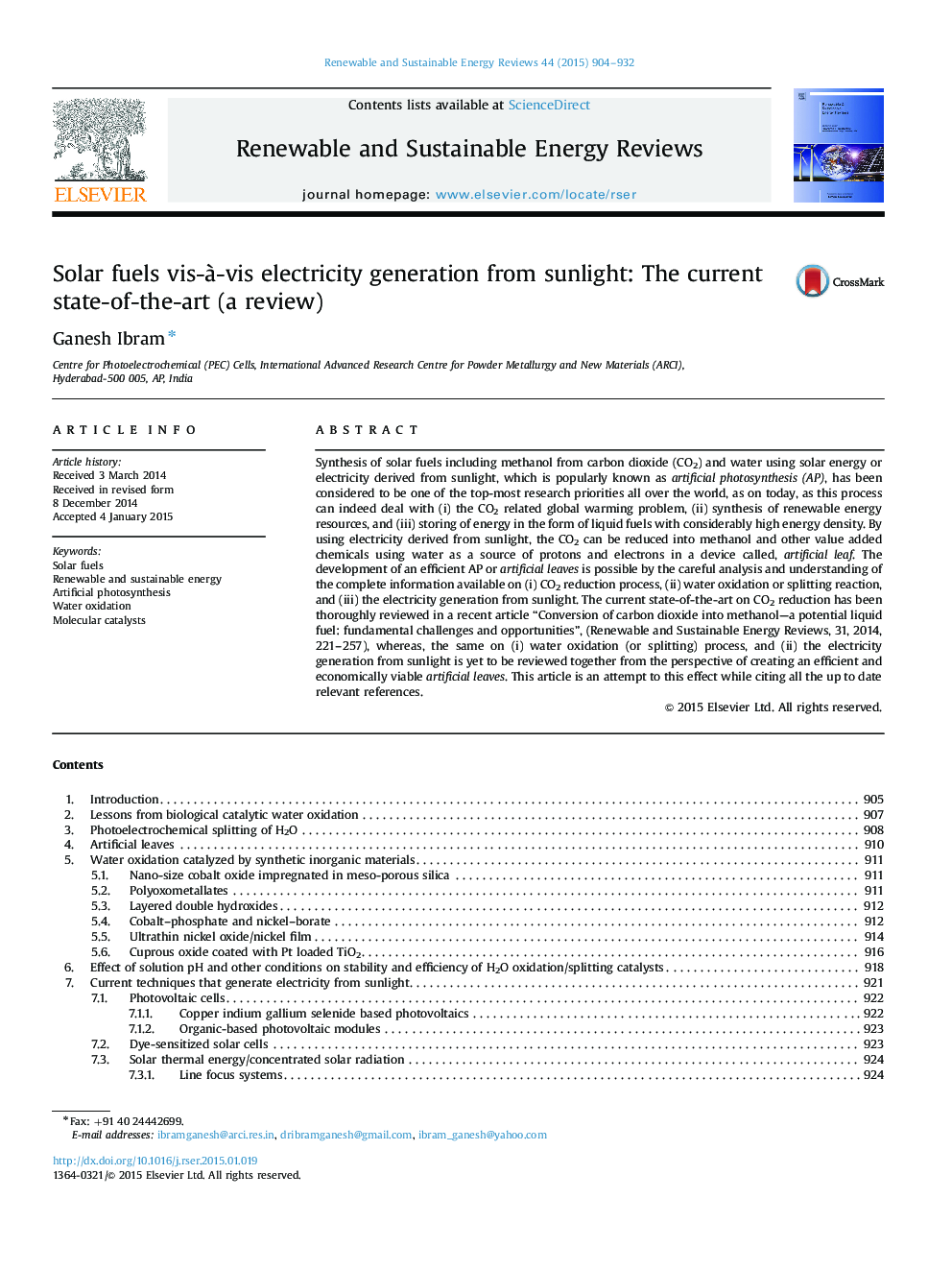| Article ID | Journal | Published Year | Pages | File Type |
|---|---|---|---|---|
| 8117511 | Renewable and Sustainable Energy Reviews | 2015 | 29 Pages |
Abstract
Synthesis of solar fuels including methanol from carbon dioxide (CO2) and water using solar energy or electricity derived from sunlight, which is popularly known as artificial photosynthesis (AP), has been considered to be one of the top-most research priorities all over the world, as on today, as this process can indeed deal with (i) the CO2 related global warming problem, (ii) synthesis of renewable energy resources, and (iii) storing of energy in the form of liquid fuels with considerably high energy density. By using electricity derived from sunlight, the CO2 can be reduced into methanol and other value added chemicals using water as a source of protons and electrons in a device called, artificial leaf. The development of an efficient AP or artificial leaves is possible by the careful analysis and understanding of the complete information available on (i) CO2 reduction process, (ii) water oxidation or splitting reaction, and (iii) the electricity generation from sunlight. The current state-of-the-art on CO2 reduction has been thoroughly reviewed in a recent article “Conversion of carbon dioxide into methanol-a potential liquid fuel: fundamental challenges and opportunities”, (Renewable and Sustainable Energy Reviews, 31, 2014, 221-257), whereas, the same on (i) water oxidation (or splitting) process, and (ii) the electricity generation from sunlight is yet to be reviewed together from the perspective of creating an efficient and economically viable artificial leaves. This article is an attempt to this effect while citing all the up to date relevant references.
Keywords
Related Topics
Physical Sciences and Engineering
Energy
Renewable Energy, Sustainability and the Environment
Authors
Ibram Ganesh,
